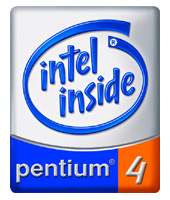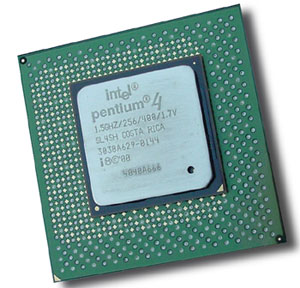
 |

|
| ActiveWin: Reviews | Active Network | New Reviews | Old Reviews | Interviews |Mailing List | Forums |
|
|
|
|
|
DirectX |
|
ActiveMac |
|
Downloads |
|
Forums |
|
Interviews |
|
News |
|
MS Games & Hardware |
|
Reviews |
|
Support Center |
|
Windows 2000 |
|
Windows Me |
|
Windows Server 2003 |
|
Windows Vista |
|
Windows XP |
|
|
|
|
|
|
|
News Centers |
|
Windows/Microsoft |
|
DVD |
|
Apple/Mac |
|
Xbox |
|
News Search |
|
|
|
|
|
|
|
ActiveXBox |
|
Xbox News |
|
Box Shots |
|
Inside The Xbox |
|
Released Titles |
|
Announced Titles |
|
Screenshots/Videos |
|
History Of The Xbox |
|
Links |
|
Forum |
|
FAQ |
|
|
|
|
|
|
|
Windows XP |
|
Introduction |
|
System Requirements |
|
Home Features |
|
Pro Features |
|
Upgrade Checklists |
|
History |
|
FAQ |
|
Links |
|
TopTechTips |
|
|
|
|
|
|
|
FAQ's |
|
Windows Vista |
|
Windows 98/98 SE |
|
Windows 2000 |
|
Windows Me |
|
Windows Server 2002 |
|
Windows "Whistler" XP |
|
Windows CE |
|
Internet Explorer 6 |
|
Internet Explorer 5 |
|
Xbox |
|
Xbox 360 |
|
DirectX |
|
DVD's |
|
|
|
|
|
|
|
TopTechTips |
|
Registry Tips |
|
Windows 95/98 |
|
Windows 2000 |
|
Internet Explorer 5 |
|
Program Tips |
|
Easter Eggs |
|
Hardware |
|
DVD |
|
|
|
|
|
|
|
ActiveDVD |
|
DVD News |
|
DVD Forum |
|
Glossary |
|
Tips |
|
Articles |
|
Reviews |
|
News Archive |
|
Links |
|
Drivers |
|
|
|
|
|
|
|
Latest Reviews |
|
Xbox/Games |
|
Fallout 3 |
|
|
|
Applications |
|
Windows Server 2008 R2 |
|
Windows 7 |
|
|
|
Hardware |
|
iPod Touch 32GB |
|
|
|
|
|
|
|
Latest Interviews |
|
Steve Ballmer |
|
Jim Allchin |
|
|
|
|
|
|
|
Site News/Info |
|
About This Site |
|
Affiliates |
|
Contact Us |
|
Default Home Page |
|
Link To Us |
|
Links |
|
News Archive |
|
Site Search |
|
Awards |
|
|
|
|
|
|
|
Credits |

|
Product: Intel Pentium 4 1.7GHz & Intel
D850GB MotherBoard |
Benchmarks Analysis
|
Table Of Contents |
| Review Quotes | ||||
| "The Pentium 4 will begin to shine on the processors' market since its SSE2 instructions really boost performance" | ||||
As you see our various benchmark results put, most of the time, the Pentium 4 1.7GHz CPU ahead of its competitors. If few of today applications are optimized for the new Pentium 4 1.7GHz instructions, benchmark programs now really take in charge the new Pentium 4 characteristics. That's why most benchmarks reveal the unbelievable, unprecedented new powerful capacities of the Pentium 4 1.7GHz. Video benchmarks clearly demonstrate the Pentium 4 is at the level of its pretentions since it always smash the Athlon 1.2GHz. With the Pentium 4 1.7GHz you get more power than ever, proving the clear benefits of the new CPU architecture. If Adobe has already released a patch for its flagship software PhotoShop 6 so it can take advantage from the new Pentium 4 SSE2 instructions, today games and programs aren't all yet optimized for the Pentium 4 and so you may not be able to enjoy an exceptionnal level of performance with casual applications. To better understand this we have included an excellent point of view from the Linley Gwennap Group:
“Performance data for the recently released Pentium 4 shows the chip's unique characteristics, which will affect the way Intel markets the processor. In 1995, when Intel began designing Pentium 4 (aka Willamette), the first MMX chip had not been released. The designers realized, however, that by the time Willamette reached the market, MMX would spur demand for multimedia applications and that those applications would become key measures of PC performance. Indeed, now that Pentium III has reached 1 GHz, it has become clear that 1990s-style applications, such as word processors and spreadsheets, don't really benefit from faster CPUs. Just as 2-D Winmark became an obsolete metric once graphics chips could redraw the screen faster than the eye could see, benchmarks based on the old-style applications become meaningless for super-GHz CPUs. For that reason, Willamette's designers did not emphasize benchmarks, such as SysMark, that rely primarily on the older productivity applications. As a result, a 1.4-GHz Pentium 4 delivers the same SysMark 2000 performance as a 1-GHz Pentium III. But those applications don't need more performance. The applications that will tax PCs in the future are 3-D graphics, image manipulation, audio/video compression and voice recognition. Pentium 4 excels in these areas: On test after test, the new processor outruns Pentium III by 20 percent to 40 percent. The results should also put Pentium 4 ahead of Advanced Micro Devices' Athlon on most multimedia apps. Presciently, the Willamette team also focused on maximizing the clock speed of their processor. Pentium 4's ultralong pipeline should reach 2 GHz in Intel's 0.18-micron process, nearly doubling the top speed of Pentium III in the same process. Athlon will be hard-pressed to reach 1.5 GHz in a comparable process. Thus, Intel will emphasize Pentium 4's clock-speed advantage over Athlon and, for more sophisticated users, its advantage on multimedia applications. AMD will point to Athlon's superior performance on benchmarks like SysMark. Intel undoubtedly wishes that Pentium 4 beat Athlon on SysMark. But the designers made the right choice in emphasizing multimedia performance. As Intel's flagship PC processor for at least the next four years, Pentium 4 is designed to excel on tomorrow's software, not yesterday's.”
![]() The new
Pentium 4 1.7GHz really makes a difference over the 1.5GHz model thanks to
the 200MHz frequency increase.
This
supplementary 200MHz helps
the Pentium 4 to beat the Athlon
most of the time, but it's not enough yet, since the Athlon
manages to outperform the Pentium 4 in
a few
tests even with a
huge 500MHz
handicap. Anyway with the appearance of the first Pentium 4 optimized
applications like Adobe PhotoShop 6.01,
the Pentium 4 will begin to shine on the processors' market since its SSE2
instructions really boost performance especially with
dedicated multimedia
applications
crucifixing the Athlon processor. The
benchmarks
demonstrate that the
Pentium 4 processor was clearly designed to bring outstanding treatment
power
to handle
high demanding multimedia
and video
applications.
Ripping and encoding operations have
never been so fast than with a Pentium 4 1.7GHz system. Actually it
would
be a great nonsense to use a Pentium 4
processor
to
perform
only office related tasks like typing Word letters:
as a matter of fact this top
notch processor is
mainly
aimed to be used with content creation applications
like Adobe PhotoShop, Premiere and last generation games. Hard core gamers
will get ultimate frame rate with the Pentium 4 promising to propel games
into a new level of reality for an enthusiastic experience.
The new
Pentium 4 1.7GHz really makes a difference over the 1.5GHz model thanks to
the 200MHz frequency increase.
This
supplementary 200MHz helps
the Pentium 4 to beat the Athlon
most of the time, but it's not enough yet, since the Athlon
manages to outperform the Pentium 4 in
a few
tests even with a
huge 500MHz
handicap. Anyway with the appearance of the first Pentium 4 optimized
applications like Adobe PhotoShop 6.01,
the Pentium 4 will begin to shine on the processors' market since its SSE2
instructions really boost performance especially with
dedicated multimedia
applications
crucifixing the Athlon processor. The
benchmarks
demonstrate that the
Pentium 4 processor was clearly designed to bring outstanding treatment
power
to handle
high demanding multimedia
and video
applications.
Ripping and encoding operations have
never been so fast than with a Pentium 4 1.7GHz system. Actually it
would
be a great nonsense to use a Pentium 4
processor
to
perform
only office related tasks like typing Word letters:
as a matter of fact this top
notch processor is
mainly
aimed to be used with content creation applications
like Adobe PhotoShop, Premiere and last generation games. Hard core gamers
will get ultimate frame rate with the Pentium 4 promising to propel games
into a new level of reality for an enthusiastic experience.

| « Benchmarks | Conclusion » |
